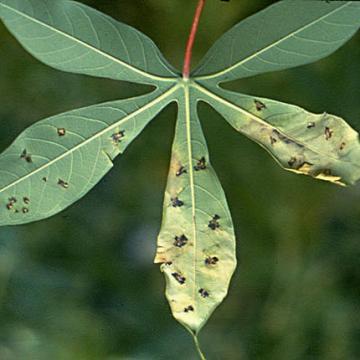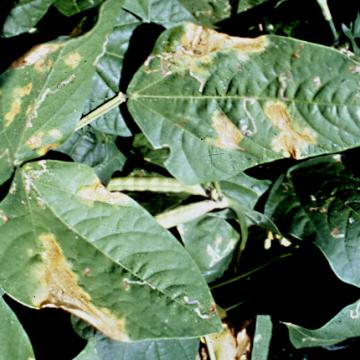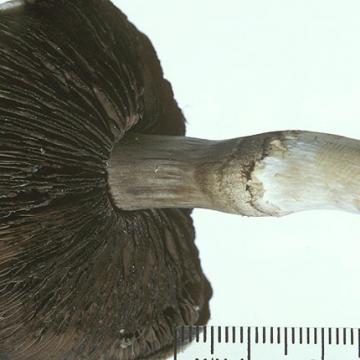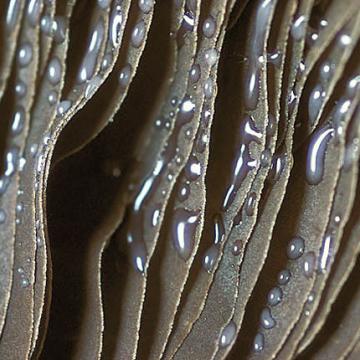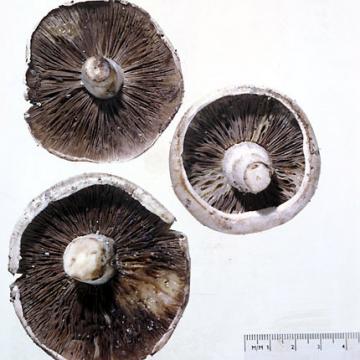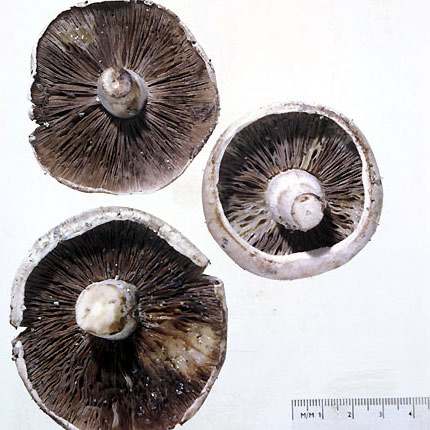DISEASE: Bacterial leaf spot (Bacterial necrosis)
HOST: Cassava
Cassava with yellowish leaves and water-soaked, angular spots. The disease is primarily on foliage, although the pathogen may invade stem buds and young branches.
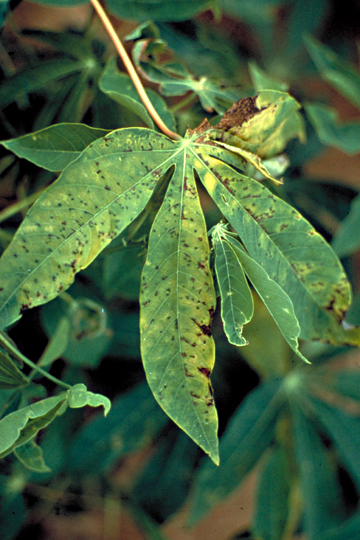
Bacterial leaf spot (Bacterial necrosis) | Cassava
DISEASE: Bacterial leaf spot (Bacterial necrosis)
HOST: Cassava (Manihot esculenta)
PATHOGEN: Xanthomonas cassavae
PATHOGEN SYNONYM: Xanthomonas campestris pv. cassavae
SOURCE: APS
DISEASE: Bacterial leaf spot (Bacterial necrosis)
HOST: Cassava
Cassava with brownish lesions and blackish edges. Leaves turn yellow with multiple infection sites.
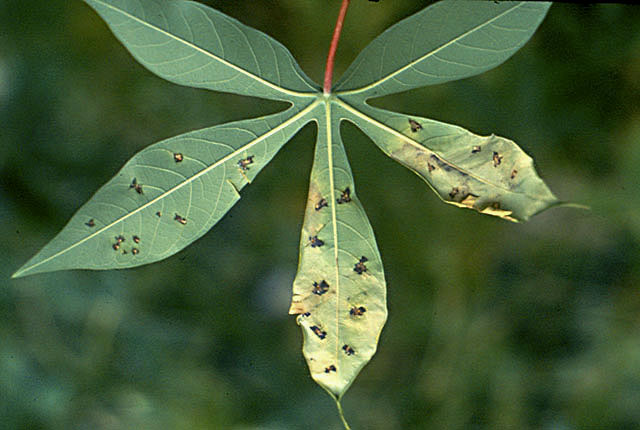
Bacterial leaf spot (Bacterial necrosis) | Cassava
DISEASE: Bacterial leaf spot (Bacterial necrosis)
HOST: Cassava (Manihot esculenta)
PATHOGEN: Xanthomonas cassavae
PATHOGEN SYNONYM: Xanthomonas campestris pv. cassavae
SOURCE: H. Maraite, A. Alvarez
DISEASE: Bacterial leaf spot
HOST: Cowpea
Leaf spots vary in size from small to large and some fall out in time, leaving a shot-hole appearance.
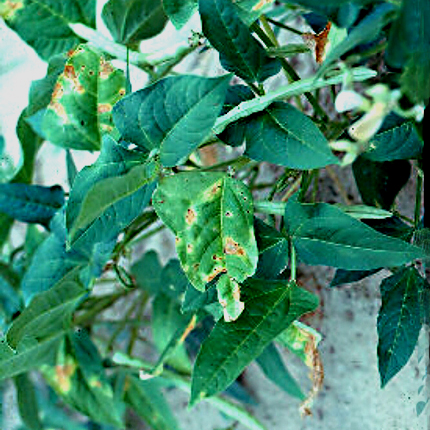
Bacterial leaf spot | Cowpea
DISEASE: Bacterial leaf spot
HOST: Cowpea (Vigna unguiculata)
PATHOGEN: Xanthomonas axonopodis pv. vignicola
PATHOGEN SYNONYM: Xanthomonas campestris pv. vignicola
SOURCE: R. Gitaitis
DISEASE: Bacterial leaf spot
HOST: Cowpea
Leaves with large, light brown necrotic areas.
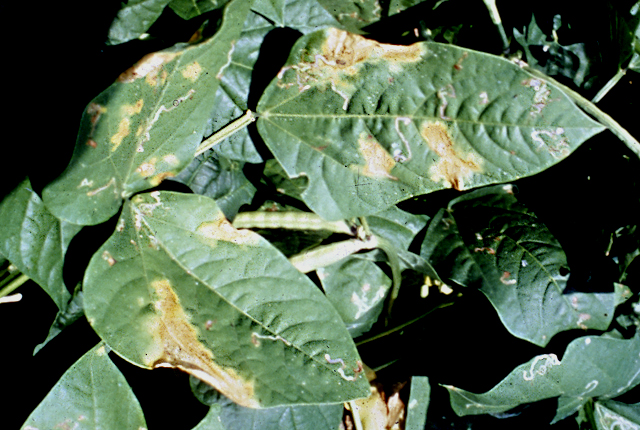
Bacterial leaf spot | Cowpea
DISEASE: Bacterial leaf spot
HOST: Cowpea (Vigna unguiculata)
PATHOGEN: Xanthomonas axonopodis pv. vignicola
PATHOGEN SYNONYM: Xanthomonas campestris pv. vignicola
SOURCE: R. Gitaitis
DISEASE: Drippy gill
HOST: Mushroom
Drippy gill is characterized by small dark spots on gills with drops of bacterial ooze at the centers. Severe infection results in slimy areas and collapse of gills.
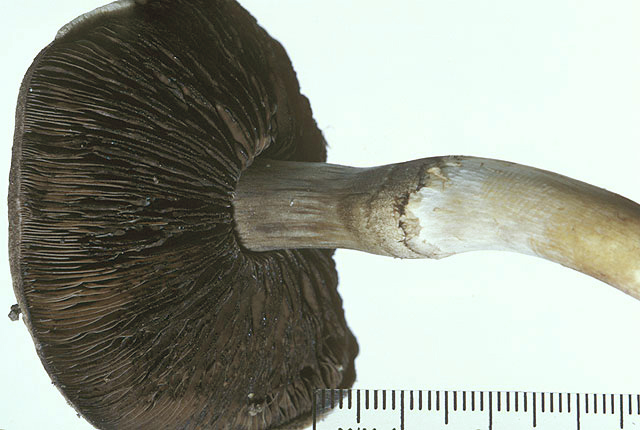
Drippy gill | Mushroom
DISEASE: Drippy gill
HOST: Mushroom (Agaricus campestris)
PATHOGEN: Pseudomonas agarici
SOURCE: J. Young
DISEASE: Drippy gill
HOST: Mushroom
Close-up of infected gills with bacterial ooze.
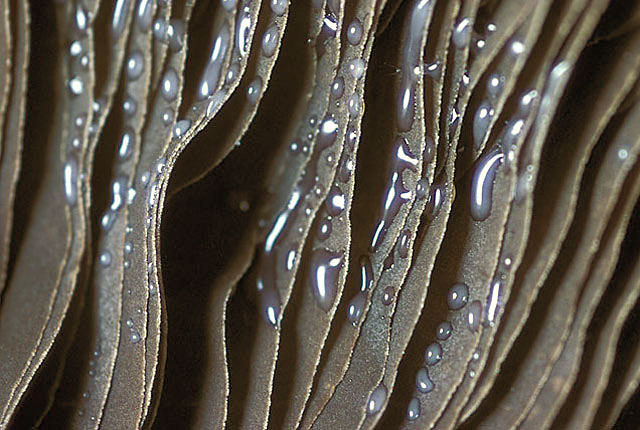
Drippy gill | Mushroom
DISEASE: Drippy gill
HOST: Mushroom (Agaricus campestris)
PATHOGEN: Pseudomonas agarici
SOURCE: J. Young



